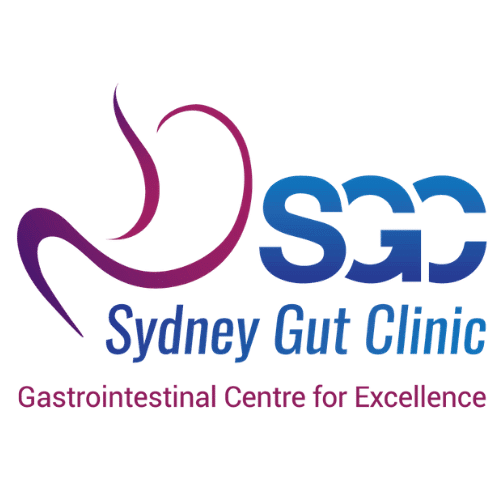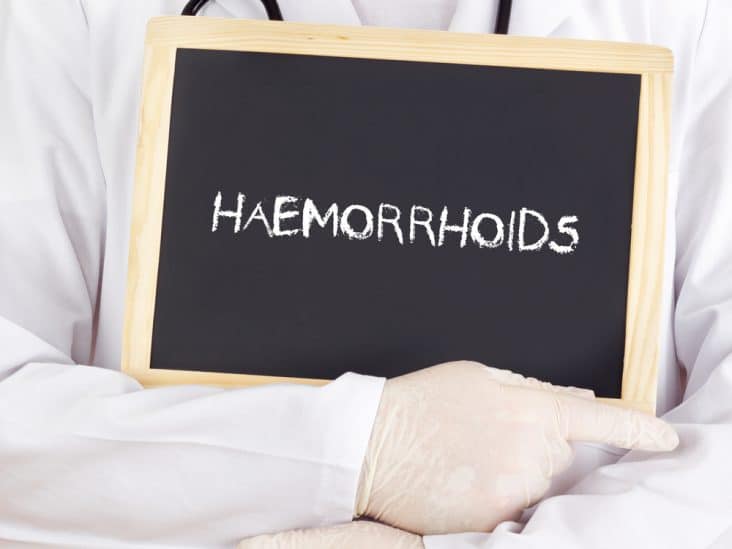Haemorrhoids refer to a condition in which the veins in the anus and lower rectum become swollen. Commonly known as “piles”, data shows that approximately 300,000 cases require haemorrhoidal treatment, every year, in Australia.
Either occurring internally, inside the rectum, which is less sensitive to pain and irritation, or externally, under the skin around the anus, haemorrhoids require treatment for effective relief.
You may also experience prolapsed haemorrhoids, which are a very painful type of haemorrhoids that originate internally. Here, veins push out through the anus and hang out of the body and may be strangled by a ring of muscle, known as the anal sphincter.
A condition caused by a number of factors, the risk of which can be increased by certain lifestyle habits, effective haemorrhoidal treatment can relieve the symptoms you may be experiencing.
Causes, symptoms, and complications
Haemorrhoids are types of formations that are generally caused over time, when small blood vessels and veins located around the anus and rectum experience certain blockages. These blockages lend blood vessels and veins a swollen or knobbly appearance.
The blockages, themselves, are the result of significant pressure being applied in this area. Given their placement, these piles tend to get irritated during bowel movements.
Pressure can be built as a result of many factors, some of the most common of which include spending excessive time on the toilet, straining during bowel movements, chronic gastroenterological conditions like diarrhoea or constipation, obesity, pregnancy, physical activity like heavy-lifting or intensive manual labour, anal intercourse, or other lifestyle factors like a low-fibre diet.
Haemorrhoids are particularly common during pregnancy, especially during the second and third trimesters. In fact, certain studies show that non-symptomatic haemorrhoids may begin displaying symptoms for the first time during pregnancy, with certain estimates proposing that around 25%-35% of pregnant women are affected by haemorrhoids.
Alongside direct causes, there are also certain risk factors that may make you more likely to develop piles. These include factors such as age, hereditary and genetic factors, weight, and the level of physical activity or exercise you get.
It’s estimated that 60% of cases of haemorrhoids are symptomatic, involving but not limited to symptoms such as:
● Discomfort, irritation or itching in the perianal area● Haemorrhoidal bleeding (blood in stool)● Faecal soilage● Bulgy and moist ridges or bumps located on the edge or bulging out of the anus● Thrombosed haemorrhoids
If complications occur, piles can lead to other medical conditions such as anaemia, which takes place if there’s a significant loss of blood. This can result in a deprivation of oxygen in the body alongside a reduction of red blood cells.
Haemorrhoids can also get strangulated if there’s not enough blood supply to an internal haemorrhoid. Additionally, blood clots can form inside haemorrhoids, requiring them to be lanced and drained in certain cases, especially if they cause pain.
When should you have haemorrhoids removed?
Haemorrhoid removal should be considered if the haemorrhoids are getting too large, if they’re bleeding, if you’re having both internal and external haemorrhoids, or if they’re persisting for a long time.
Patients should also consider having them removed if they cause discomfort and pain.
Diagnosis
A rectal examination or inspection may be performed to detect piles. In certain cases, this may even be done through a sigmoidoscopy or colonoscopy. These are used to examine the anus and the anal canal, especially since haemorrhoidal bleeding could be the result of more serious gastroenterological conditions.
A colonoscopy is a procedure that is performed to examine the entire colon using a flexible tube. A sigmoidoscopy or a flexible sigmoidoscopy, on the other hand, allows us to examine the rectum and the sigmoid colon, which is the lower end of the colon.
In both procedures, biopsies can be obtained.
Treatment options
Medication
The primary medication prescribed for haemorrhoid treatment is topical analgesics (haemorrhoid creams), although these may only be useful in terms of relieving certain symptoms. Continued use of certain creams are also not recommended unless directed by a physician.
Additionally, certain painkillers like aspirin and ibuprofen may also be prescribed.
Procedures
In the event that other haemorrhoid treatment methods fail to reduce symptoms or are not suitable in particular cases, procedural or office-based interventions may be recommended.
While external haemorrhoids generally don’t need to be treated through surgical intervention, thrombosed external haemorrhoids or particularly large haemorrhoids may be removed in this manner.
In this process, either a haemorrhoidectomy or a rubber band ligation may be performed. The former comprises the removal of any excess tissue that may be causing bleeding and the latter, where rubber bands are introduced to the base of an internal haemorrhoid, blocking blood flow to the affected tissue.
A haemorrhoidectomy is performed under anaesthesia and involves haemorrhoids either being cut away, pulled back inside the rectum and stapled in place or closing down arteries that supply blood to the haemorrhoids, thereby helping them shrink.
If you’re being treated through rubber band ligation, at the time of colonoscopy, which provides a clearer look into the anal canal. A surgical instrument will than grasp the haemmorrhioid and a rubber band will be placed at the base of the haemorrhoid. The haemorrhoid then starts to shrink and die after about a week where it will simply fall off completely.
If the bands placed feel too tight, medication may be injected into the haemorrhoids to numb them. While this method of haemorrhoid removal is less painful, a haemorrhoidectomy is considered to be the most effective of the two. Rubber band ligation also involves a greater risk of recurrence and rectal prolapse, which is a condition where the rectum protrudes from the anus.
Other surgical treatments of haemorrhoids include injections, which contain chemical solutions designed to reduce the haemorrhoidal tissue, and infrared coagulation. Here, infrared light is trained on haemorrhoidal tissue, especially for those reporting bleeding as a result of internal haemorrhoids.
How painful is haemorrhoid removal?
The pain a patient feels from haemorrhoid removal varies with the procedure used for haemorrhoid removal. Haemorrhoidectomy is done with anaesthesia but patients may experience a bit of pain after the procedure.
This pain can be treated with medications such as painkillers and will go away on its own after a week.
Dietary and lifestyle changes
One of the primary recommendations made in terms of haemorrhoid treatment includes dietary modification to increase the consumption of high-fibre food items and the reduction of processed food.
Fibre, especially in the form of vegetables, fruits, nuts, and whole grains, has demonstrable benefits on the digestive system, most importantly, helping stool pass through with less difficulty, preventing straining and/or constipation and, thereby, the buildup of pressure that can lead to the formation of haemorrhoids.
Fibre, however, needs to be incorporated into your diet gradually and must be consumed according to your daily nutrient intake requirements. A gradual consumption prevents excessive flatulence. If it’s not possible to increase fibre in this manner, fibre supplements or stool softeners may be recommended. Laxatives, on the other hand, could make haemorrhoids worse.
Increased hydration also needs to be a major part of your treatment plan.
In addition to this, take sitz baths regularly if recommended. These are warm, shallow baths that clean the perianal area, which is the area between the rectum and the vulva. You can either do this manually or by using plastic sitz bath sets that fit over your toilet.
Depending on any concomitant health conditions, getting more exercise may be beneficial, given its positive effects on the digestive system. Increased physical activity has also proved to be an effective way of relieving some of the symptoms of haemorrhoids.
Prevention
Preventing haemorrhoids is within your control if reasonable precautions are taken and certain lifestyle changes are made.
Here, one of the primary recommendations is that you avoid straining during bowel movements, avoid spending an excessive amount of time on the toilet, pat the anus when cleaning it, rather than rubbing it, and use moist toilet paper or baby wipes instead of dry paper, for this purpose.
In addition to these, maintain the appropriate intake of fibre on a daily basis to ease your bowel movements and prevent a host of other gastroenterological conditions.
Receive treatment for haemorrhoid from experienced gastroenterologists in Sydney.
If you’re experiencing this condition at present or are at risk of developing haemorrhoids, understanding its causes and symptoms will help you understand what needs to be done to reduce your discomfort and lower your risk.
To enjoy complete relief from symptoms of this condition, however, it’s important to receive treatment for haemorrhoid from gastroenterologists with the right experience and expertise.
In receiving treatment, it’s important to remember that there is no one-size-fits-all remedy in these scenarios. To enjoy real and lasting relief, receiving personalised treatment is crucial. This ensures that your specific symptoms are addressed through targeted remedies, which vary from person to person.
For more information on haemorrhoid treatment, speak to gastroenterologists, led by Dr Suhirdan Vivekanandarajah, at the Sydney Gut Clinic.

